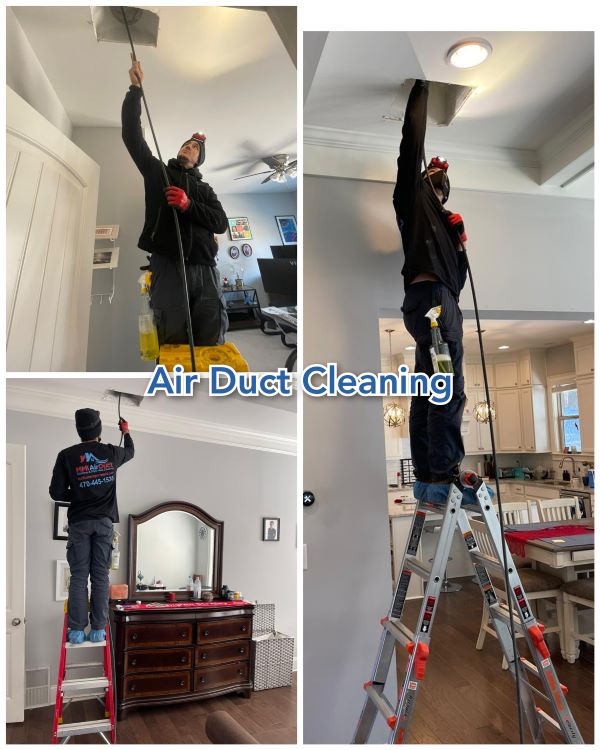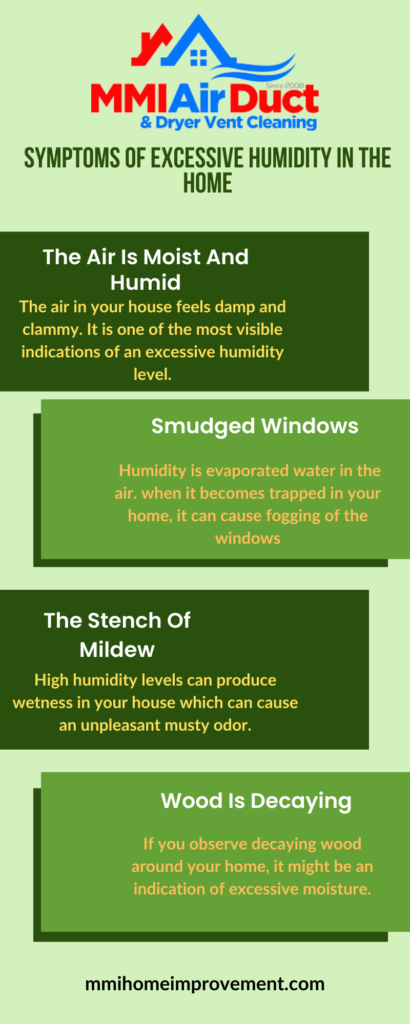Indoor Humidity may make your house seem unpleasant and hotter than it is, especially if moisture levels are quite high. Fortunately, there are solutions to reduce indoor humidity and take control of your indoor comfort.
What Causes Excessive Indoor Humidity In A Building
Your air conditioning system cools your house by removing heat and moisture from the air, but when humidity levels are high, your system must work more to give the same degree of comfort. If your home’s HVAC equipment lacks sufficient cooling capability, it will be unable to deal with high humidity. As a result, Your home’s temperature will never be entirely pleasant. Therefore, you need to perform a complete duct cleaning.
Optimal Indoor Humidity Level
According to the Environmental Protection Agency (EPA), the recommended indoor humidity level is about 40% and no more than 50%. Firstly, the air is pleasant. Secondly, the air is healthy to breathe at these levels.
Keeping That in mind, it’s critical to understand that excessive indoor humidity is unpleasant. Furthermore it may also be harmful to your house and your health.
What Is The Level Of Excessive Humidity
When the indoor humidity level exceeds 50%, it is considered excessive.
At this stage, your house is more vulnerable to dust mite infestations, mildew, mold development, and other pathogens. As a result, It can result in major health problems for people who inhale mold spores or are exposed to germs for extended periods.
You need to immediately contact a professional cleaner. Air duct dry fogging disinfection in Dunwoody is the best cleaning agency in the town. You can easily hand over your house to their cleaners for cleaning purposes.

Symptoms Of Excessive Humidity In The Home
Keeping the above information in mind, the following are indicators of excessive humidity levels in your home:
1. The Air Is Moist And Humid:
Firstly, The air in your house feels damp and clammy. It is one of the most visible indications of an excessive humidity level. Secondly, your skin may also feel significantly damp.
2. Smudged Windows:
Humidity is evaporated water in the air. when it becomes trapped in your home, it can cause fogging of the windows.
3. The Stench Of Mildew:
High humidity levels can produce wetness in your house which can cause an unpleasant musty odor.
4. Visible Mold:
Do you have a mold stain in your home? Excess humidity (particularly in areas of your house prone to moisture, such as the bathroom, kitchen, and laundry room) may rapidly become a problem. As they favor mold growth, you need to be extra careful about these places in your home.
5. Wood Is Decaying:
If you observe decaying wood around your home, it might be an indication of excessive moisture.
6. Allergies Become Increasingly Severe:
If you have allergies that seem to become worse inside your house, it might be due to poor indoor air quality. Excess moisture in the air can encourage the growth and spread of airborne allergens such as mold spores.
Whatever the season, your indoor air quality is something you should constantly consider. The major focus is obviously on keeping optimum temperature, but regulating your interior humidity also impacts your air quality.

Use the below code to Embed this infographic
How To Control Humidity Problems:
You can try opening windows; however, depending on the humidity levels outside, this may or may not help. There are more effective techniques to manage the humidity in your home. Humidity is much more than just heating and cooling. The quantity of moisture in the air is measured by humidity.
Humidity may make you feel like you’re in a tug of war between heat and chilly. It might be difficult to get the ideal indoor humidity balance. However, we’ve compiled a list of tips and strategies to assist you in understanding and learning about controlling the humidity in your home.
1. The Hygrometer:
A hygrometer is a gadget that measures the humidity in your home. An efficient instrument for maintaining high-quality indoor humidity.
When determining proper in-house humidity, keep in mind that quality humidity does not imply cold. It’s all about locating the ideal humidity level.
The typical humidity level in your house should be between 35% and 45%. If you go above that limit, you may experience health problems.
If the humidity level in your home exceeds 50%, it will feel damp and wet owing to excess moisture. When the humidity level is excessive, you will detect Mold, moist walls, and feel hot.
If your home’s humidity level falls below 30%, it will begin to feel dry. Low humidity levels cause dry skin and scalp and an increased chance of catching a cold or getting an infection.
2. Central Air Conditioning:
Aside from providing an excellent supply of cold air, an air conditioner also helps to dehumidify your home. The air conditioner converts warm air into condensation by cycling it, resulting in optimal interior humidity.
3. Thermostat:
As opposed to air conditioners, heat pumps deliver both warmth and cooling. While air conditioners help minimize dampness, heat pumps perform better in all seasons. Again, absorbing extra moisture and generating the appropriate humidity level in your house.
4. Dehumidifier
Robin and Batman are a powerful combo to clean the air. It consists of a dehumidifier and air conditioner. These both retain all bad air behind filters.
A dehumidifier is the most effective way to reduce humidity in your house. A dehumidifier’s role is to filter damp, humid air, chill it, and produce dry, clean air.
Dehumidifiers can also work in tandem with your air conditioner. Installing a dehumidifier allows you to minimize your air conditioning consumption, saving you money on energy expenses.
5. Insulation:
Maintaining a well-insulated home is an excellent way to keep quality humidity in the home.
There are an increasing number of household goods and regions that generate moisture. Everything from your attic to your windows, Plumbing, shower, and stove is covered. Inspect your insulation for dampness, wall cracks, or locations that have been overlooked for quality moisture control.
6. Leaks In The Plumbing:
Leaking pipes cause significant plumbing problems and lead to excess humidity. Moisture might form in the surrounding region as a result of water leakage.
If you have discolored walls or floors, or damaged drywall, contact a professional to resolve your plumbing problem.
7. Exhaust Fans :
The exhaust fan’s function is to collect any humid air emitted by an appliance or a specific region. The exhaust fan is most effective when installed in the bathroom, kitchen, or laundry room.
8. Outdoor Cooking:
Even though most cooking is done indoors, cooking outside is one approach to preserve quality humidity at home. Why not take advantage of the nice weather, especially if it’s summer?
Cooking inside might generate a lot of moisture, depending on what you’re creating. When you cook outside, you directly exhaust heat and moisture into the surrounding air.
9. Desiccated Atmosphere:
Keep a towel on hand. Dry these surfaces, whether you’ve let water leak from your shower or created a tsunami while cleaning the dishes. Allowing puddles to accumulate allows water to infiltrate through cracks or tiles and create Mold.
10. Ceiling Fans:
By using a ceiling fan, you may dehumidify the air in your house. When you spin the ceiling fan clockwise, the speed moves the air about the room and evaporates any moisture on your skin or in the fan’s vicinity.
Conclusion:
In conclusion, we can say that it is easier to control humidity in your home as compared to reducing its level once it is increased significantly. Therefore, you have to take extra care of humidity in your building.
